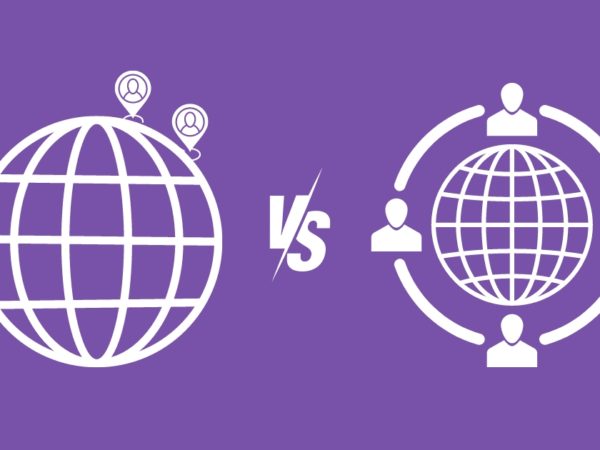
Capital is one of the biggest problems for small businesses, especially sole proprietors, due to limited investment sources. As a small business owner, you must strategically cut costs to avoid running out of capital without stalling business operations.
You might think the initial capital is sufficient, but unexpected expenses can easily drain the capital. Don’t take this lightly; insufficient capital is one of the most common reasons for business failure, which accounts for 38% of failed businesses.
Besides, optimally cutting costs not only prevents capital from running out but also helps businesses scale by optimally utilizing resources. To help you cut costs, I bring you the most reliable methods that will reduce costs without cutting corners.
Optimize Software For Cost Saving
Business software can easily cost thousands of dollars yearly; it doesn’t have to, though. Don’t blindly pick the best software in a category, it won’t magically lead to success. You need to make sure you pay for only what is required and see if there is free software for it. Below I am listing some ways you can optimize business software:
Opt for Open-Source Software
For most business apps, there are dedicated open-source apps that can be used by businesses for free, at a very cheap price, or have a limited free version that is good enough for small businesses. Arguably, these apps are more customizable thanks to the extensive plugin market, and a dedicated community is always there to answer your questions. Below you’ll find some of the popular ones for businesses:
- Operating System: Linux
- Office Suite: LibreOffice
- Open-Source Project Management Software
- Customer Relationship Management (CRM) Software: Dolibarr or Odoo.
- Communication and Collaboration Tool: Rocket.Chat or Mattermost.
- Open-Source Web Analytics tool
- Accounting and Finance Software: GnuCash
- Point of Sale (POS) Software: Odoo Point of Sale
There are many other such open-source software that can easily replace costly business software; just add open source at the end of your search on Google.
Freemium Can Work for Businesses
Although the free version of a premium app is usually considered good for personal use only, many premium apps offer a good free version that could work for a small business of 25-50 people. For example, Slack, Canva, and Trello all have reliable free versions that can handle small teams fine. Make sure you search for free alternatives to required apps to see if they can work.
Revaluate Software Licenses
Audit your current licenses to make sure you are paying for what you need. When you initially bought the licenses, you probably must have bought a plan that offers beyond your needs to stay on the safe side. Now that you know how you are utilizing the software, see if a software plan can be downgraded without affecting business operations.
Migrate to Cloud
You can move your data, applications, and IT infrastructure to the cloud to save physical infrastructure costs and also optimize your setup. Below are some benefits of moving to the cloud that directly helps save money:
- No upfront expenses on physical hardware as everything works in the cloud.
- It is easier to upscale or downscale as cloud services are subscription-based, unlike physical hardware, where you usually have to buy new to upgrade and have no easy way to downgrade.
- Pay for what you use only as cloud services charge based on the service needed, i.e., no unused infrastructure.
- No expenses for server maintenance or patching as all is handled by the cloud service.
- Most cloud solutions come with robust security features built-in, so you don’t have to worry about in-house security measures for them.
- In case of a disaster, cloud solutions make recovery a snap without any data getting lost or important infrastructure damaged.
For an all-in-one solution, a cloud platform like Microsoft Azure or Google Cloud Platform will be best. These platforms can provide everything you need to manage your IT-related things in the cloud, including storage, virtual servers, network resources to build and run apps, CRM, communication, AI and machine learning, analytics, and much more.
If your business doesn’t need a complete cloud solution, then you can also go for individual cloud apps. For example, for storage and collaboration, you can try Google Workspace and QuickBooks Online for managing accounting and finance in the cloud.
Encourage Remote Collaboration
You don’t have to fully convert to a virtual remote team, but you should foster a remote-friendly culture, as it can have many cost-saving benefits. Many business tasks can be handled remotely, like payrolls, customer support, data entry, accounting, IT support, etc. Below are some cost-cutting benefits of encouraging remote work.
- You can downsize the office to save on rent, utilities, furniture, and other physical space management costs.
- Less need for dedicated desktops and space to manage them. You can replace them with laptops that are more suitable for remote work. Employees can even use their own devices.
- Helps save employee transportation costs if you manage them, or at least boost employee morale.
- Using digital communication and tools helps save on paper and office supplies.
- Save on catering and refreshments with fewer employees in the office.
- If a job could be done fully remotely, you can access a wider pool of talent to hire someone more experienced at a competitive rate.
- Studies suggest that employees are 47% more productive while working from home, which indirectly saves money for you.
- Online collaboration tools record working activity and for many jobs, you only have to pay for work done.
Remote work is possible using the right tools that will allow you to communicate, share files, brainstorm ideas, hold meetings, track progress, and everything that is required to complete the job. Below I am listing some of the most important types of tools and the best tools in the category. You can also choose the open-source alternatives I have mentioned above for maximum savings:
Communication: You need a reliable way to communicate with the team, including chat and audio/video calls. Slack or Zoom are my recommendations.
Project Management: A project management app like Asana or Monday.com will help you track time, collaborate, manage resources, generate reports, and perform many other tasks related to work projects.
Document Sharing and Collaboration: Although most communication apps do have some way to share files, a dedicated sharing and collaboration tool is needed when working on large files. Google Drive and Dropbox are perfect for this.
Introduce Automation
You can use software and tools to automate repetitive business tasks that will help cut costs in many areas directly or indirectly. Whether it’s automating inventory management or payroll, there are many ways to automate business tasks. To give you a better idea of its benefits, I am listing some ways automation can help you save money:
- By automating repetitive tasks, you can free up employees for more important tasks that require creativity and strategy. This will decrease the need to hire additional employees to cover all aspects.
- Automation increases overall employee work productivity; they will get more work done in office time, and there will be less need for overtime pay.
- Automation usually involves digital apps, which means less expenses on paper, printing, and other office supplies.
- Eliminates the inevitable human error that could lead to more expenses or unproductivity.
- Many tools help automate regulatory compliance, which can prevent fines and other associated problems.
Now you need the right tools to automate business tasks. To help you with that, below I am listing some important ones:
Automate Human Resources: Many HR tasks can be automated using an HR management app like BambooHR or Workday. This includes onboarding, payroll, reporting, employee benefits, etc.
Project Management: Project management tools like Asana can automatically assign tasks, set deadlines, track progress, manage revisions, and generate reports.
Marketing: Not just automatic email marketing, there are tools that can automatically publish posts on social media, generate content, enhance SEO, and much more. Hootsuite, Anyword, and Surfer are worth exploring, in my opinion.
Accounting and Finance: Tools like QuickBooks Online can automatically record transactions, categorize expenses, generate and manage invoices, process refunds, pay bills, calculate taxes, and generate different financial reports.
Inventory Management: Automation tools like Zoho Inventory or inFlow can monitor stock levels, predict demand and order new stock, manage product prices/discounts, create purchase orders, and much more.
Customer Service: AI chatbots can automatically handle common customer queries. Furthermore, helpdesk software like Zendesk can automatically manage customer tickets, assign the right agent, track resolution progress, and track customer service metrics for future improvement.
Optimally Manage Cyber Security
Cyber attacks pose a real threat to businesses as they lead to business downtime, data loss, legal fees, and reputation damage. Like any responsible business with customer data in hand, I am sure you have protective measures in place to prevent cyber attacks. However, are you doing it optimally?
Putting a dedicated security team with hardware servers for data encryption or filtering isn’t the most efficient approach. Furthermore, manual patching and reactive response strategy can be prone to human error and delays which could cause lots of damage before resolution.
Having a few well-trained employees with the right tools in hand can be more efficient and cost-saving for your business. I recommend using an all-in-one cyber security solution like Acronis Cyber Protect that will actively monitor your business data and security measures to prevent cyber attacks.
Acronis Cyber Protect actively logs all changes and helps you quickly diagnose problems. Its ransomware protection can not only prevent attacks but also replace data using backups in case of a successful attack. Some other important features include smart access controls, security audits, direct device controls, powerful encryption, monitoring and reporting, and many more.
Apart from using the right tools, employee education is very important too. With social engineering attacks on the rise, you need to make sure your employees don’t become victims. I am sure your security team can help with that as they get more time in hand using automatic security tools.
Bonus Tips to Cut Business Costs
I am listing some more tips that can help cut costs. These are not as impactful as the above methods, but they are worth considering:
- Introduce the Bring Your Own Device policy to cut down on equipment costs.
- Invest in remote IT support instead of on-site for cheaper and possibly more talented support, thanks to the larger hiring pool.
- Perform energy audits and make sure you are using equipment with low-energy ratings.
- Consider using hardware virtualization to better utilize hardware capabilities.
- Focus on cheaper and long-term marketing solutions like social media presence and building email lists instead of expensive ad campaigns.
- Go paperless to save on related costs, like using digital receipts. You can also convert old paper documents to digital ones.
- Outsource non-core functions to freelancers and agencies for cheaper work without requiring direct management.
- Track KPIs to optimize business strategies.
- Implement time strategies to increase productivity and track employee work done. Toggl can help with that.
Final Words
I know that these strategies will significantly change the way your business works, but the results are worth it. You don’t have to apply all of them immediately since many of them will require employee training. Apply them according to the availability of resources and current needs of your business.
Best of all, these strategies will not only help cut costs but also digitize your business to be on a more efficient growth path.



